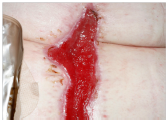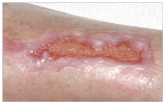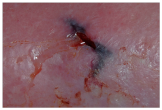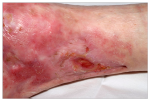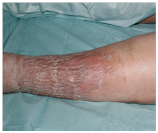A tunnelling effect or pocket under the edge of the wound.
Extension of the wound bed into adjacent tissue, also known as a sinus tract.
Aid healing from inside wound
- Loose packing/layering with alginate/hydrofibre
or hydrogel - Seek advice from appropriate healthcare professional



